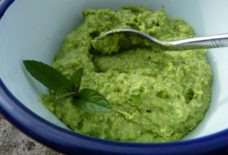The Power of Palestinian Representation in Children's Literature

By: Amanda Najib / Arab America Contributing Writer
Amanda Najib is an educator turned scholar, passionate about integrating Arab and Palestinian history into educational curricula. She is the author of Lana Makes Purple Pizza: A Palestinian Food Tale and focuses on the transformative power of narrative and representation in education.
Picture books have an incredible ability to shape young minds. Lana Makes Purple Pizza: A Palestinian Food Tale and other picture books like it, which highlight Palestinian culture, history, and resilience, represent a crucial step toward reclaiming our stories in the face of Zionist settler-colonial erasure. These books are not just about representation—they’re about ensuring that our narratives are told authentically, with pride, and by us.
The Glaring Absence of Arab and Palestinian History in U.S. Curricula
When I examine school curricula across the U.S., the absence of Arab, and especially Palestinian, history is glaring. Including these histories in our educational systems isn’t just about representation, though that’s an essential starting point. It’s about reclaiming our narrative and ensuring our stories are told by our voices. This gives students a fuller, more accurate understanding of a people who have been systematically erased and demonized. If we are to prevent this erasure, we must incorporate picture books that confront historical realities.
Reclaiming the Narrative
Representation is critical, but it’s just the beginning. For too long, the history of Arabs and Palestinians has been distorted, incomplete, and intentionally demonized. The solution isn’t just to “add us in” but to reclaim control over the narrative. We need to be the ones writing our curricula, telling our stories, and ensuring that future generations understand the depth of our experiences. The California Ethnic Studies curriculum, for instance, represents an intentional erasure of Palestinian and Arab history, guaranteeing that students won’t learn about these histories. When we create our own educational materials, we can highlight the nuances, struggles, and triumphs that are too often ignored.
The absence of these narratives is stark. According to the Cooperative Children’s Book Center (CCBC), only about 1% of children’s books published in the U.S. in recent years were about Arabs, and even fewer featured Palestinian characters or stories. This lack of representation extends beyond picture books and into broader curricula, where Arab and Palestinian histories are reduced to footnotes or framed through biased lenses, depicting us as terrorists, villains, and outsiders. This gap in the curriculum ensures that students grow up without understanding the rich cultural history of Palestine or the ongoing struggles faced by Palestinians today. Initiatives like California’s are a disservice to all students, who deserve a fuller understanding of the world they live in.
The Importance of Filling the Gap in Children’s Literature
Picture books play a vital role in shaping young minds and building cultural awareness. They’re often the first introduction children have to different cultures, and they help lay the foundation for critical thinking, empathy, and understanding. Yet, when it comes to Arab and Palestinian stories, there’s a severe shortage. The scarcity of these picture books in classrooms and libraries means many children grow up without seeing themselves reflected in the stories they read. This lack of representation can harm their self-esteem and identity, while access to books that reflect their experiences can be incredibly empowering.
Progress and the Path Forward
Despite these challenges, there are signs of progress. In recent years, there’s been a growing movement to increase the presence of Arab and Palestinian stories in educational materials. Grassroots organizations, educators, and authors are working tirelessly to create and promote books that tell our stories authentically. Publishers are slowly recognizing the demand for diverse stories, and we’re seeing a gradual increase in Arab and Palestinian picture books. Educational initiatives are also emerging to help teachers meaningfully integrate these stories into their classrooms.
The path forward is clear: we must continue to advocate for the inclusion of Arab and Palestinian history in curricula—not just for representation but as a way to empower our communities to tell our stories. By doing so, we can ensure that future generations have a more accurate and comprehensive understanding of the world and of themselves. As we fight for these changes, we must also support those already making strides, whether by advocating for policy reform, uplifting Arab and Palestinian authors and publishers, or simply ensuring these stories are present in our homes and communities. Together, we can create an educational system that reflects the true diversity of our world.
Check out our blog here!








